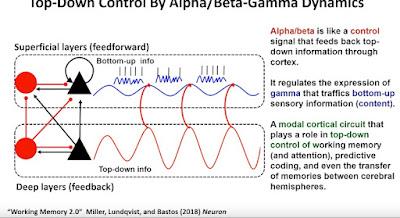This is an extremely interesting video about perception, awareness, and consciousness, though I'll have to do a more than a little bit of reading to make use of this information. One thing surprised me a bit. At the beginning Miller Talks about the clockwork metaphor for understanding the brain. The idea is that there are rigid connections between neurons, which have highly specific sensitivities. This is the kind of thinking that led to the idea of so-called grandmother neurons, neurons that responded only to one's grandmother, or to Bill Clinton, or your dog, a favorite tree, whatever. This idea is easy to understand and that gives it plausibility. The fact that researchers have discovered cortical neurons with very specific sensitivity (e.g. Bill Clinton) lends credence to this idea.
But there is another idea that's been around for a while, and this is where Miller is heading. This idea is that, on the one hand, perceptions of particular objects or actions are distributed over a population of neurons and, correlatively, that any given neuron participates in responding to many different stimuli. It's difficult to get your head around this, but, as I said, the idea's been around for awhile. I discovered it in 1969 in an article Karl Pribram published in December 1969. I soon adopted it.
That was 50 year ago. Now I understand that the idea of distributed representation was hard for people to grasp, and that the clockwork view persisted, but I hadn't realized that is persisted for so long that it is necessary, in 2022, to point out its limitations. So Miller does that early on.
And then he poses a questions: If any given neuron will respond to many different stimuli and many response populations can be active at once, how does the brain get a coherent view of the world? How does one population of neurons win out over the others. His answers: synchronization. He spends the rest of the video exploring that.
This screen shot is from the conclusion:

I'm thinking of top-down control as being setting reference levels in the sense that Bill Powers talks about (Behavior: The Control of Perception). Bottom-up is sensory input. Notice that we're looking a layers in the cortex.

